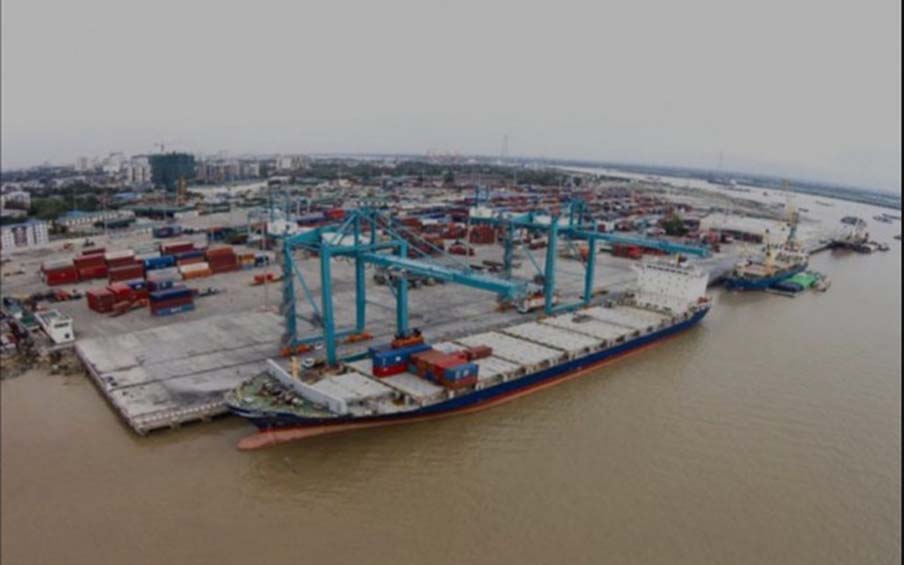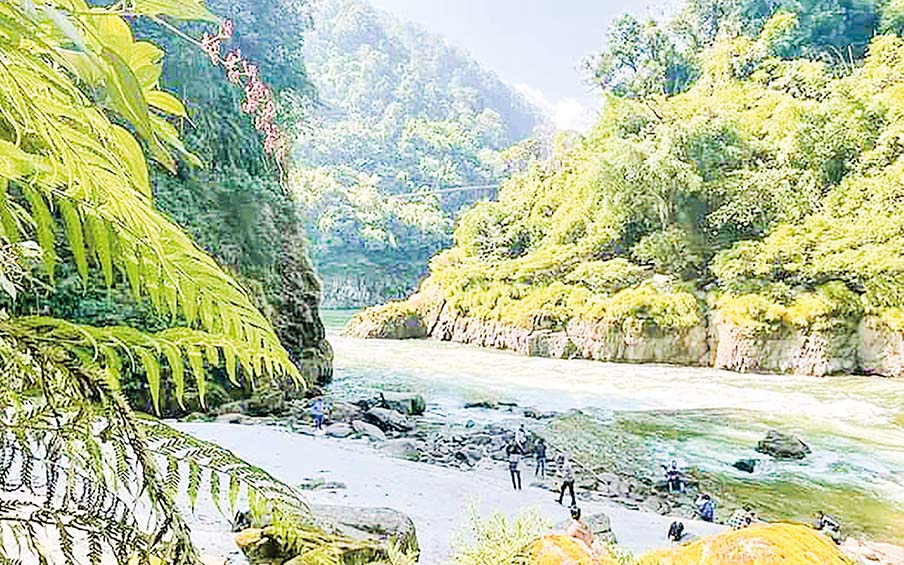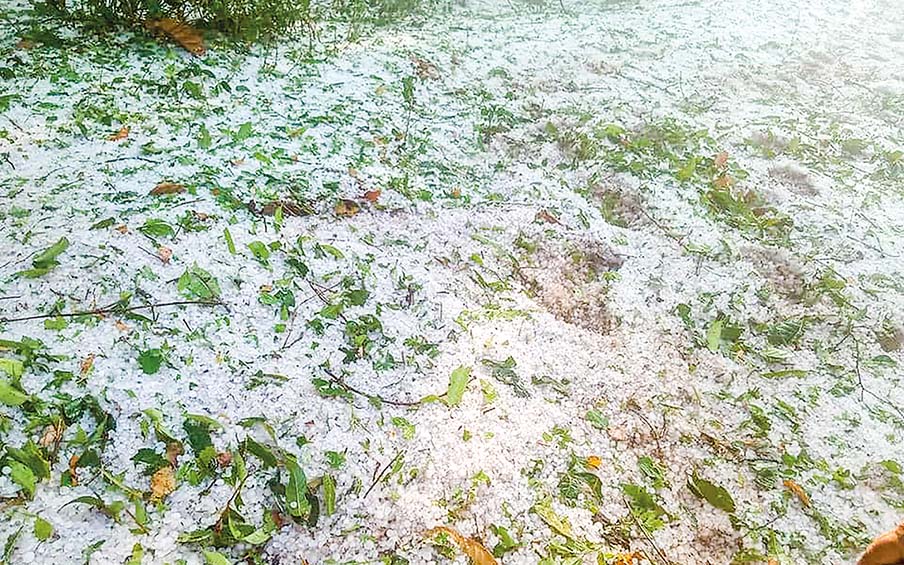Than Htun (Myanmar Geosciences Society)
This is the third article on the World Ocean which will describe the Atlantic Ocean in brief. The Atlantic Ocean, a body of salt water covering approximately one-fifth of Earth’s surface and separating the contents of Europe and Africa to the east from those of North and South America to the west. The ocean’s name, derived from Greek mythology, means the “Sea of Atlas.” It is second in size to the Pacific Ocean.
The Atlantic is, generally speaking, S-shaped and narrow in relation to its length. The area of the Atlantic without its dependent seas is approximately 31,830,000 square miles, and with them, its area is about 41,100,000 square miles. It has an average depth of 10,925feet and a maximum depth of 27,493 feet in the Puerto Rico Trench, north of the island of Puerto Rico.
The ocean’s breadth from east to west varies considerably. Between Newfoundland and Ireland, it is about 2,060 miles; farther south, it widens to more than 3,000miles before narrowing again so that the distance from Cape São Roque, Brazil, to Cape Palmas, Liberia, is only some 1,770 miles. Southward it again becomes broader and is bordered by simple coasts almost without islands; between Cape Horn and the Cape of Good Hope, the ocean approaches Antarctica on a broad front nearly 4,000 miles wide.
Although not the largest of the world’s oceans, the Atlantic has by far the largest drainage area. The continents on both sides of the Atlantic tend to slope toward it so that it receives the waters of a great proportion of the major rivers of the world; these include St. Lawrence, the Mississippi, the Orinoco, the Amazon, the Río de la Plata, the Congo, the Niger, the Loire, the Rhine, the Elbe, and the great rivers draining into the Mediterranean, Black, and Baltic seas. In contrast to the South Atlantic, the North Atlantic is rich in islands, in the variety of its coastline, and in tributary seas. The latter includes the Caribbean Sea, the Gulfs of Mexico and St. Lawrence, and Hudson and Baffin bays on the west and the Baltic, North, Mediterranean, and Black seas on the east.
Physiography
Various boundaries have been used to define particularly the northern but also the southern limits of the Atlantic Ocean. There are no universally accepted boundary conventions. In the north, the situation is further complicated by the fact that the Arctic Ocean frequently is considered to be a dependent sea of the Atlantic. This is because the Arctic basin, which stretches from the Bering Strait across the North Pole to Spitsbergen and Greenland-resembles a semi-enclosed basin.
Relief of the ocean floor
The outstanding feature of the Atlantic floor is the Mid-Atlantic Ridge, an immense median mountain range extending throughout the length of the Atlantic, claiming the centre third of the ocean bed and reaching roughly 1,000 miles in breadth. This feature, though of tremendous proportions, is but the Atlantic portion of the world-encircling oceanic ridge.
In some places, the Mid-Atlantic Ridge reaches above sea level to form islands. Iceland, which rises from its crest, is rent by an extension of the median rift valley. East and west of the ridge, about 12,000 to 18,000 feet below sea level, lie basins that seem to present a relatively even profile, but parts of the basin floor are as mountainous as the Mid-Atlantic Ridge, while other parts are extremely smooth. The former are rocky abyssal hills; the latter are the abyssal plains that form the upper surface of great ponds of mud that fill many of the broad depressions. Large ancient volcanoes are found singly or in rows in the basins; these have risen to form seamounts and, occasionally, islands.
Islands of the Atlantic Ocean
Among purely oceanic islands are Iceland, the Azores, Ascension, St. Helena, Tristan da Cunha, Bouvet, and Gough, which all rise from the Mid-Atlantic Ridge; and the Canary, Madeira, and Cape Verde islands and Fernando de Noronha (near Cape São Roque), which rise from the continental margins of Africa and South America. Volcanic islands of a different sort are those of the two great arcs: the Lesser Antilles and the South Sandwich Islands. Partly continental and partly oceanic are the Greater Antilles in the Caribbean and South Georgia and the South Orkney Islands in the Scotia Sea. Purely continental are the British Isles, Newfoundland, the Falkland Islands (Islas Malvinas), and Greenland, which is an extension of the Canadian Shield.
Geology
The origin and development of the Atlantic Ocean are now accounted for by the theories of continental drift and plate tectonics, according to which a vast protocontinent, Pangea, began to break up about 180 million years ago. The rifting caused the landmasses of the Western and Eastern hemispheres to separate, opening up the Atlantic Ocean basin. As can be seen on a map of the world, the continental coastlines of North America and Europe and of South America and Africa almost match. If the edges of the continental shelves are matched, the fit is nearly perfect. Other geologic and paleontological similarities found on both sides of the Atlantic substantiate the theory of plate tectonics and thus help explain the evolution of the Atlantic.
Perhaps the most conclusive evidence bearing out this theory of origin is to be found in the existence of the Mid-Atlantic Ridge. The ridge is, in effect a long rift zone of mountains, volcanoes, and faulted plateaus. A high heat flow, which is associated with the extrusion of magma and with seafloor spreading, exists in the rift zone. The crustal material on either side of the ridge is notably younger than that on the corresponding plateaus, indicating an uprising of material from Earth’s mantle onto the crest of the ridge. The newer rock is composed mainly of gabbro (a coarse-grained rock formed deep within the mantle under heat and pressure), basalt (a rock that originally poured out at the surface in molten form), and serpentine (a common rock-forming mineral). Consequent movement of the ocean floor and of the continents in opposite directions outward from the ridge is widening the Atlantic basin at an estimated rate of about 0.4 inch to a maximum of about 4 inches per year. The worldwide average rate has been estimated at 1 inch annually. The corresponding spreading is occurring at an even faster pace in the Pacific Ocean; in the Atlantic, however, the slower rate of spreading causes the flanks of the ridge to be built up steeply by accumulating lava.
Bottom deposits
The greater part of the bottom of the Atlantic is covered with calcareous ooze. At depths greater than 16,400 feet, the calcium carbonate content decreases, and the calcareous deposits give way to red clay. The finer material is not evident on submarine ridges, and the shells of pteropod gastropods (molluscs of the gastropod class comprising the snails) may be sufficiently abundant there to characterize the deposits as pteropod ooze. Diatom ooze (formed from microscopic unicellular algae having cell walls consisting of or resembling silica) is the most widespread deposit in the high southern latitudes but, unlike in the Pacific, is missing in northern latitudes.
In the 1960s, the Joint Oceanographic Institutions for Deep Earth Sampling deep-drilling project penetrated the entire thickness of sediment in the Atlantic. Apparently, the oldest sediments in the Atlantic basin accumulated during the Mesozoic Era (i.e., about 252 to 66 million years ago). Dating of sediment layers by radioactive-decay measurements or by examination of the traces in rocks of reversals of Earth’s magnetic poles (which occur every few million years) shows that the rate of accumulation of pelagic sediment in the Atlantic is 0.4 to 0.8 inch (1 to 2 cm) per thousand years. The rate in a given locality, however, may be much faster because of deposition by turbidity currents.
Mineral resources
Submarine hydrocarbons
A wealth of petroleum and natural gas lies under the continental shelves and slopes and the oceanic rises and plateaus of the Atlantic basin proper and portions of its marginal seas. The amount of recoverable reserves is enormous: some estimates have ranged as high as one-third of the projected total for all of the world’s recoverable oil and natural gas. The value of these resources represents the vast majority of all of the Atlantic’s non-renewable resources. In the United States, revenues from offshore leases have been one of the largest sources of federal income, and receipts from offshore production have been important for the economies of the United Kingdom and Norway since the 1970s.
The earliest exploitation of Atlantic hydrocarbon reserves occurred in Lake Maracaibo (a nearly enclosed embayment in north-western Venezuela that is connected by a narrow channel to the Caribbean Sea) during World War I, followed in the 1940s by the development of nearshore areas of the Gulf of Mexico. Extensive offshore seismic exploration since the 1960s has revealed recoverable oil and natural gas deposits elsewhere in the Atlantic.
Methane hydrates are an important potential energy resource found in some Atlantic ocean sediments. Hydrates are a gas (methane) surrounded by water molecules existing in a solid form. Below depths of roughly 1,650 feet, methane hydrates can occur as stable deposits in sediments of the ocean floor up to hundreds of feet thick.
Alluvial deposits
Extensive mining of sand, gravel, and shell deposits in shallow parts of the continental shelf take place off the coasts of the United States and Britain. The recovered aggregates are used as landfill, for construction, and for making concrete. Deposits of calcareous shells are dredged off the coast of Iceland and on the Great Bahama Bank in the Bahamas, and the shells are used in cement manufacture and as a soil additive. Offshore placer deposits of precious metals, metallic ores (e.g., of iron, tin, titanium, and chromium), and gemstones are found at various points along the Atlantic coastline, particularly off the south-eastern United States Wales, Brazil, Mauritania, and Namibia. The exploitation of these deposits has been erratic. Diamonds have been dredged from the shallow waters and beaches off the coast of Namibia near the mouth of the Orange River. Exploitation has moved more recently into deeper waters offshore.
Deep-sea minerals
Certain regions of the ocean floor that are covered with red clay and siliceous ooze sediments are also carpeted with metallic nodules. The nodules form in concentric layers over millions of years and are composed primarily of manganese and iron, with lesser quantities of copper, nickel, and cobalt. The main concentrations of nodules are thought to be on the Sohm Plain east of Bermuda in the North Atlantic and in the Brazil Basin east of Brazil, and the Agulhas Basin south of South Africa in the South Atlantic.
Reference: Jeff Wallenfeldt (2020). The Atlantic Ocean.











